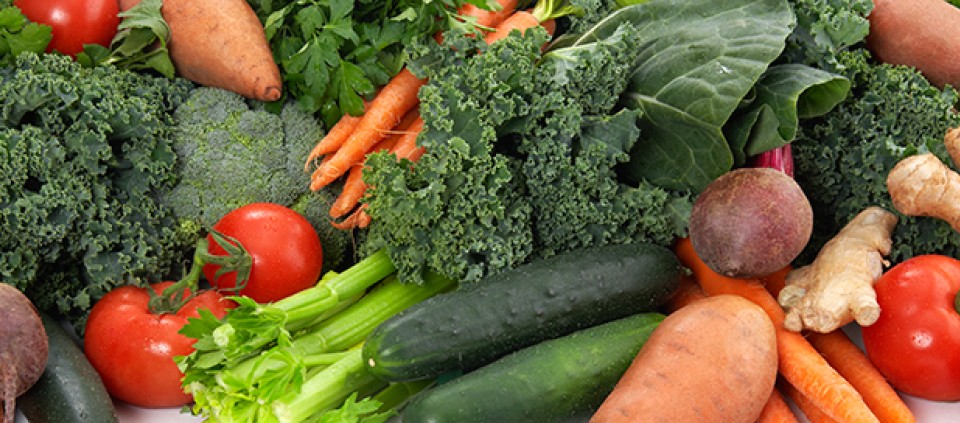How to Use Food as Medicine

To what extent should we be using food to maintain our health and heal our body? According to nutritionist and Kripalu presenter John Bagnulo, PhD, MPH, “Food—not supplements—should be where you get 98 percent of your nutrients.”
Like John, Kathie Madonna Swift, MS, RD, LDN, an integrative clinical nutritionist who teaches at Kripalu, believes in a “whole-foods, whole-person, whole-life” approach to health. That’s the philosophy behind next month's Food As Medicine conference, which focuses on nutritional science and stress-reduction methods to prevent disease and help those with chronic conditions.
Dr. James S. Gordon, MD, founder and director of the Center for Mind-Body Medicine, helped create the Food As Medicine approach some 20 years ago for Georgetown University medical students. He emphasizes that, while certain foods do have therapeutic qualities, food alone cannot cure many chronic health imbalances and ailments unless the underlying issue of stress is also addressed.
“Changing the diet along with dealing with stress is often far more powerful than medication,” he says. “And there are no side effects.”
James believes that Western doctors turn to medication too quickly. While he says that some advanced conditions require drugs, he’s seen excellent results over 40 years of working with food therapeutically.
“All you have to do is look at doctors like Dr. Dean Ornish, who has helped fight heart disease with simple changes to the diet along with yoga and stress management tools,” he says.
Kathie says certain foods can be especially helpful for specific health conditions. Here are her food “prescriptions” for six common conditions.
Low or high blood sugar: Cinnamon, as little as half a teaspoon daily, can help balance your blood sugar while reducing cravings. Kathie suggests adding cinnamon to food along with a spoonful of vinegar to slow down the absorption of carbs and further balance blood sugar.
Depression/mood: “Neurotransmitters are chemical messengers that influence our state of mind,” says Kathie. “Research indicates that fermented foods might give our moods a lift. Women who enjoyed a serving of a cultured food product (yogurt) showed enhanced activity in the region of the brain that has to do with emotional resiliency.” In addition, our “microbiota”—the community of bacteria in our belly—thrives on probiotic-rich foods such as kimchi, sauerkraut, yogurt, kefir, and fermented veggies.
Acne/skin damage: Spent too much time in the sun this summer? Green tea tops Kathie's list of healing foods that protect against sun damage, because it contains EGCG, a powerful antioxidant. For those with sensitive skin, dairy products can aggravate acne, as can soy. Healthy alternatives include coconut-, hemp-, and almond-based milks, yogurts, and cheeses.
Chronic pain/fibromyalgia: For aching muscles, try buckwheat, which is rich in magnesium and malic acid. Despite its name, buckwheat is not a grain but rather a member of the rhubarb family. Kathie also recommends turmeric and ginger to decrease pain and inflammation.
Indigestion/irritable bowel syndrome: Instead of reaching for the medicine cabinet when your stomach hurts, consider papaya, pineapple, or peppermint. “Pineapple contains glutamine, which is a gut-healing substance,” explains Kathie. “It also contains the enzyme bromelain, while papaya contains the enzyme papain, both great digestive aids. Peppermint, which is often used by herbalists, can calm an irritable bowel.”
Alzheimer’s disease: A recent article in the journal Neurobiology of Aging on dietary and lifestyle guidelines for prevention of Alzheimer’s disease indicates that food truly is our best medicine, Kathie says. A daily handful of sunflower seeds, rich in vitamin E compounds (and more effective than vitamin E supplements, Kathie says), can help maintain brain health.
© Kripalu Center for Yoga & Health. All rights reserved. To request permission to reprint, please e-mail editor@kripalu.org.